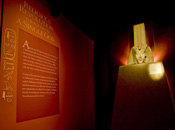
"Djedi" is a joint international-Egyptian mission, which dr. Zahi Hawas, secretary general of the Supreme Council of Antiquities, named after Djedi, the magician who "Khufu" consulted when planning the layout of his pyramid.
The purpose of this project is to send a robotic tunnel explorer into the two “air shafts” that lead from the Queen’s Chamber of the Great Pyramid of Khufu to gather evidence to determine the purpose of the shafts.He selected the "Djedi team" during a competition that he coordinated to pick the best possible robot to explore the shafts in the Great Pyramid.
This international team is experienced in the development and deployment of systems to meet real world challenges, including systems for space, search and rescue and medical devices, as well as inspection of stone structures.
"Djedi team" hopes to uncover the meaning of these airshafts by drilling through the doors that are blocking them. The team has made to previous examinations of the airshafts in July and December of 2009. The team is hoping to gather as much evidence as possible to try to piece together the purpose of the airshafts, while at the same time ensuring that the Great Pyramid is not damaged in any way.
The story of the discovery of the hidden doors began in 1992, when "Zahi Hawas" made the decision to close the Great Pyramid to visitors in order to begin a project to reduce the humidity inside and to correct the damage that was occurring from the accumulation of salt. Each visitor who enters the pyramid leaves behind about 20 grams of moisture from their breath and sweat. When it evaporates, this moisture leaves behind salt deposits, which erode the stone over time.
In 1992, It was found that the humidity inside the pyramid was hovering around 85%, and salt deposits covered the walls of the Grand Gallery hence the salt was cleaned from the walls of the Grand Galley, but it was known that to save the pyramid from irreversible damage, a way should be found to reduce the humidity inside.
Dr." Zahi Hawa" contacted some specialists for installing a ventilation and humidity control system in the pyramid. The first step was to clear the two shafts, each about 20 cm wide and 14 cm high, that lead from the King’s Chamber to the exterior of the monument. Then they installed ventilation equipment in the shafts. This project was very successful, allowing reduction and stabilization of the humidity inside the pyramid.
The shafts themselves are a great mystery. In addition to the two that extend from the King’s Chamber, there are two in the Queen’s chamber as well - one in the northern wall, and one opposite it in the southern wall. No one knows why these shafts were included in the pyramid’s design. An important part of the work in the shafts in the King’s Chamber was sending a small robot inside with a camera attached, to
inspect them along their entire lengths.
Reference: from an article , by Zahi Hawas




